Bergues
|
Bergues
|
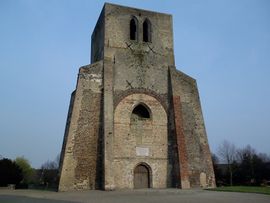 |
| Remains of Saint Winoc Abbey |
|
|
Location within Nord-Pas-de-Calais region
|
| Administration |
| Country |
France |
| Region |
Nord-Pas-de-Calais |
| Department |
Nord |
| Arrondissement |
Dunkerque |
| Canton |
Bergues |
| Intercommunality |
Canton of Bergues |
| Mayor |
André Declercq
(2001–2008) |
| Statistics |
| Elevation |
1–22 m (3.3–72 ft) |
| Land area1 |
1.32 km2 (0.51 sq mi) |
| Population2 |
4,207 (1999) |
| - Density |
3,187 /km2 (8,250 /sq mi) |
| INSEE/Postal code |
59067/ 59380 |
| 1 French Land Register data, which excludes lakes, ponds, glaciers > 1 km² (0.386 sq mi or 247 acres) and river estuaries. |
| 2 Population sans doubles comptes: residents of multiple communes (e.g., students and military personnel) only counted once. |
Bergues (Dutch: Sint-Winoksbergen) is a commune in the Nord department in northern France.
It is situated 9 kilometres (5.6 mi) to the south of Dunkirk and 15 kilometres (9.3 mi) from the Belgian border. Locally it is referred to as "the other Bruges in Flanders". Bergues is a setting for the 2008 movie Welcome to the Sticks (French original title Bienvenue chez les Ch'tis).
History
The town's name derives from the Flemish groene berg, which means "green hill". According to legend, St. Winnoc, son of the Breton king, retired to Groenberg, a hill on the edge of the coastal marshes. His establishment soon developed into a small monastery.
In 882, when the Normans began their incursions, the Flanders count Baudouin II built primitive fortifications. Later, about 1022, count Baudouin IV built Saint-Winnoc church and interred the relics of St. Winnoc there. This church formed the basis of an abbey.
Trade was aided by proximity to the sea, which had not yet receded to Dunkirk, and the abbey. Bergues was chartered in 1240, and its independence was later expressed in the construction of a belfry. It became a port and textile center of regional importance, and part of the Hanseatic League. Its wool market began in 1276 and over the following centuries it was fortified and maintained its independence from France. In 1583, Bergues was besieged and conquered by Alexander Farnese, but king Philip II of Spain allowed it to be rebuilt, establishing the present appearance of the town. Bergues became a major port city and eventually was attached to France by the Treaty of Aix-la-Chapelle in 1668. Louis XIV later developed Dunkirk, and Bergues was eclipsed as a major port. After the French Revolution, its decline continued.
Bergues was devastated by bombardment in World War I, and again in 1940 during the Battle of Dunkirk. The city was entered on June 2 of that year, and 80% of it was ruined during World War II.
Near industrialized Dunkirk, its many monuments are reminders of a rich past, and tourism has been developed in recent years.
Bergues was the setting for the 2008 French film Bienvenue chez les Ch'tis. The film, which broke French box office records, is credited with triggering a tourism boom in Bergues.[1]
Heraldry
|
|
The arms of Bergues are blazoned :
Argent, a lion contourny sable langued gules impaled with Argent, a fess sable, and on a canton Or, a lion sable within a bordure gules.
|
Sights
- The belfry is the city's most celebrated attraction. Started in the 13th century it was rebuilt after the French invasion in 1383 and again in the 16th century, and restored during the 19th century. Damaged by fire in 1940 and destroyed by dynamiting in 1944, it was again rebuilt in 1961. It was classified as a historic building in 2004 and, as one of the Belfries of Belgium and France, a UNESCO World Heritage Site on July 16, 2005. A carillon of 50 bells sounds for the Monday market and other festivities.
- The ramparts, 5,300 metres (17,400 ft) long, are partly medieval and partly constructed by Vauban.
- The abbey of St. Winoc was destroyed in 1789, and only parts remain: the marble door and two towers.
Gallery
The belfry has a carillon of 50 bells.
|
The Gate of Cassel, on a triangular pediment, incorporating the radiating sun of Louis XIV.
|
|
The spire of Saint Winoc abbey.
|
The ramparts, 5300 meters long, have surrounded almost the entire town for five centuries.
|
The belfry in Bergues (2004)
|
Town partnerships
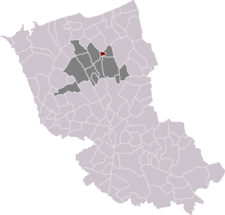
Location of Bergues in the arrondissement of Dunkirk
Trivia
The movie Bienvenue chez les Ch'tis (by Dany Boon) plays in Bergues
See also
- Communes of the Nord department
References
External links
Communes of the Nord department  |
|
Abancourt · Abscon · Aibes · Aix · Allennes-les-Marais · Amfroipret · Anhiers · Aniche · Anneux · Annœullin · Anor · Anstaing · Anzin · Arleux · Armbouts-Cappel · Armentières · Arnèke · Artres · Assevent · Attiches · Aubencheul-au-Bac · Auberchicourt · Aubers · Aubigny-au-Bac · Aubry-du-Hainaut · Auby · Auchy-lez-Orchies · Audignies · Aulnoy-lez-Valenciennes · Aulnoye-Aymeries · Avelin · Avesnelles · Avesnes-les-Aubert · Avesnes-le-Sec · Avesnes-sur-Helpe · Awoingt · Bachant · Bachy · Bailleul · Baisieux · Baives · Bambecque · Banteux · Bantigny · Bantouzelle · Bas-Lieu · La Bassée · Bauvin · Bavay · Bavinchove · Bazuel · Beaucamps-Ligny · Beaudignies · Beaufort · Beaumont-en-Cambrésis · Beaurain · Beaurepaire-sur-Sambre · Beaurieux · Beauvois-en-Cambrésis · Bellaing · Bellignies · Bérelles · Bergues · Berlaimont · Bermerain · Bermeries · Bersée · Bersillies · Berthen · Bertry · Béthencourt · Bettignies · Bettrechies · Beugnies · Beuvrages · Beuvry-la-Forêt · Bévillers · Bierne · Bissezeele · Blaringhem · Blécourt · Boeschepe · Boëseghem · Bois-Grenier · Bollezeele · Bondues · Borre · Bouchain · Boulogne-sur-Helpe · Bourbourg · Bourghelles · Boursies · Bousbecque · Bousies · Bousignies · Bousignies-sur-Roc · Boussières-en-Cambrésis · Boussières-sur-Sambre · Boussois · Bouvignies · Bouvines · Bray-Dunes · Briastre · Brillon · Brouckerque · Broxeele · Bruay-sur-l'Escaut · Bruille-lez-Marchiennes · Bruille-Saint-Amand · Brunémont · Bry · Bugnicourt · Busigny · Buysscheure · Caëstre · Cagnoncles · Cambrai · Camphin-en-Carembault · Camphin-en-Pévèle · Cantaing-sur-Escaut · Cantin · Capelle · Capinghem · Cappelle-Brouck · Cappelle-en-Pévèle · Cappelle-la-Grande · Carnières · Carnin · Cartignies · Cassel · Le Cateau-Cambrésis · Catillon-sur-Sambre · Cattenières · Caudry · Caullery · Cauroir · Cerfontaine · La Chapelle-d'Armentières · Château-l'Abbaye · Chemy · Chéreng · Choisies · Clairfayts · Clary · Cobrieux · Colleret · Comines · Condé-sur-l'Escaut · Coudekerque-Branche · Coudekerque-Village · Courchelettes · Cousolre · Coutiches · Craywick · Crespin · Crèvecœur-sur-l'Escaut · Crochte · Croix · Croix-Caluyau · Cuincy · Curgies · Cuvillers · Cysoing · Damousies · Dechy · Dehéries · Denain · Deûlémont · Dimechaux · Dimont · Doignies · Dompierre-sur-Helpe · Don · Douai · Douchy-les-Mines · Le Doulieu · Dourlers · Drincham · Dunkirk · Ebblinghem · Écaillon · Eccles · Éclaibes · Écuélin · Eecke · Élesmes · Élincourt · Émerchicourt · Emmerin · Englefontaine · Englos · Ennetières-en-Weppes · Ennevelin · Eppe-Sauvage · Erchin · Eringhem · Erquinghem-le-Sec · Erquinghem-Lys · Erre · Escarmain · Escaudain · Escaudœuvres · Escautpont · Escobecques · Esnes · Esquelbecq · Esquerchin · Estaires · Estourmel · Estrées · Estreux · Estrun · Eswars · Eth · Étrœungt · Faches-Thumesnil · Famars · Faumont · Le Favril · Féchain · Feignies · Felleries · Fenain · Férin · Féron · Ferrière-la-Grande · Ferrière-la-Petite · La Flamengrie · Flaumont-Waudrechies · Flers-en-Escrebieux · Flesquières · Flêtre · Flines-lès-Mortagne · Flines-lez-Raches · Floursies · Floyon · Fontaine-au-Bois · Fontaine-au-Pire · Fontaine-Notre-Dame · Forest-en-Cambrésis · Forest-sur-Marque · Fort-Mardyck · Fourmies · Fournes-en-Weppes · Frasnoy · Frelinghien · Fresnes-sur-Escaut · Fressain · Fressies · Fretin · Fromelles · Genech · Ghissignies · Ghyvelde · Glageon · Godewaersvelde · Gœulzin · Gognies-Chaussée · Gommegnies · Gondecourt · Gonnelieu · La Gorgue · Gouzeaucourt · Grande-Synthe · Grand-Fayt · Grand-Fort-Philippe · Gravelines · La Groise · Gruson · Guesnain · Gussignies · Hallennes-lez-Haubourdin · Halluin · Hamel · Hantay · Hardifort · Hargnies · Hasnon · Haspres · Haubourdin · Haucourt-en-Cambrésis · Haulchin · Haussy · Haut-Lieu · Hautmont · Haveluy · Haverskerque · Haynecourt · Hazebrouck · Hecq · Hélesmes · Hem · Hem-Lenglet · Hergnies · Hérin · Herlies · Herrin · Herzeele · Hestrud · Holque · Hon-Hergies · Hondeghem · Hondschoote · Honnechy · Honnecourt-sur-Escaut · Hordain · Hornaing · Houdain-lez-Bavay · Houplin-Ancoisne · Houplines · Houtkerque · Hoymille · Illies · Inchy · Iwuy · Jenlain · Jeumont · Jolimetz · Killem · Lallaing · Lambersart · Lambres-lez-Douai · Landas · Landrecies · Lannoy · Larouillies · Lauwin-Planque · Lecelles · Lécluse · Lederzeele · Ledringhem · Leers · Leffrinckoucke · Lesdain · Lesquin · Leval · Lewarde · Lez-Fontaine · Lezennes · Liessies · Lieu-Saint-Amand · Ligny-en-Cambrésis · Lille · Limont-Fontaine · Linselles · Locquignol · Loffre · Lompret · La Longueville · Looberghe · Loon-Plage · Loos · Lourches · Louvignies-Quesnoy · Louvil · Louvroil · Lynde · Lys-lez-Lannoy · La Madeleine · Maing · Mairieux · Le Maisnil · Malincourt · Marbaix · Marchiennes · Marcoing · Marcq-en-Barœul · Marcq-en-Ostrevent · Maresches · Maretz · Marly · Maroilles · Marpent · Marquette-en-Ostrevant · Marquette-lez-Lille · Marquillies · Masnières · Masny · Mastaing · Maubeuge · Maulde · Maurois · Mazinghien · Mecquignies · Merckeghem · Mérignies · Merris · Merville · Méteren · Millam · Millonfosse · Les Moëres · Mœuvres · Monceau-Saint-Waast · Monchaux-sur-Écaillon · Moncheaux · Monchecourt · Mons-en-Barœul · Mons-en-Pévèle · Montay · Montigny-en-Cambrésis · Montigny-en-Ostrevent · Montrécourt · Morbecque · Mortagne-du-Nord · Mouchin · Moustier-en-Fagne · Mouvaux · Naves · Neuf-Berquin · Neuf-Mesnil · La Neuville · Neuville-en-Avesnois · Neuville-en-Ferrain · Neuville-Saint-Rémy · Neuville-sur-Escaut · Neuvilly · Nieppe · Niergnies · Nieurlet · Nivelle · Nomain · Noordpeene · Noyelles-lès-Seclin · Noyelles-sur-Escaut · Noyelles-sur-Sambre · Noyelles-sur-Selle · Obies · Obrechies · Ochtezeele · Odomez · Ohain · Oisy · Onnaing · Oost-Cappel · Orchies · Ors · Orsinval · Ostricourt · Oudezeele · Oxelaëre · Paillencourt · Pecquencourt · Pérenchies · Péronne-en-Mélantois · Petit-Fayt · Petite-Forêt · Phalempin · Pitgam · Poix-du-Nord · Le Pommereuil · Pont-à-Marcq · Pont-sur-Sambre · Potelle · Pradelles · Prémesques · Préseau · Preux-au-Bois · Preux-au-Sart · Prisches · Prouvy · Proville · Provin · Quaëdypre · Quarouble · Quérénaing · Le Quesnoy · Quesnoy-sur-Deûle · Quiévelon · Quiévrechain · Quiévy · Râches · Radinghem-en-Weppes · Raillencourt-Sainte-Olle · Raimbeaucourt · Rainsars · Raismes · Ramillies · Ramousies · Raucourt-au-Bois · Recquignies · Rejet-de-Beaulieu · Renescure · Reumont · Rexpoëde · Ribécourt-la-Tour · Rieulay · Rieux-en-Cambrésis · Robersart · Rœulx · Rombies-et-Marchipont · Romeries · Ronchin · Roncq · Roost-Warendin · Rosult · Roubaix · Roucourt · Rousies · Rouvignies · Rubrouck · Les Rues-des-Vignes · Ruesnes · Rumegies · Rumilly-en-Cambrésis · Sailly-lez-Cambrai · Sailly-lez-Lannoy · Sainghin-en-Mélantois · Sainghin-en-Weppes · Sains-du-Nord · Saint-Amand-les-Eaux · Saint-André-lez-Lille · Saint-Aubert · Saint-Aubin · Saint-Aybert · Saint-Benin · Sainte-Marie-Cappel · Saint-Georges-sur-l'Aa · Saint-Hilaire-lez-Cambrai · Saint-Hilaire-sur-Helpe · Saint-Jans-Cappel · Saint-Martin-sur-Écaillon · Saint-Momelin · Saint-Pierre-Brouck · Saint-Pol-sur-Mer · Saint-Python · Saint-Remy-Chaussée · Saint-Remy-du-Nord · Saint-Saulve · Saint-Souplet · Saint-Sylvestre-Cappel · Saint-Vaast-en-Cambrésis · Saint-Waast · Salesches · Salomé · Saméon · Sancourt · Santes · Sars-et-Rosières · Sars-Poteries · Sassegnies · Saultain · Saulzoir · Sebourg · Seclin · Sémeries · Semousies · La Sentinelle · Sepmeries · Sequedin · Séranvillers-Forenville · Sercus · Sin-le-Noble · Socx · Solesmes · Solre-le-Château · Solrinnes · Somain · Sommaing · Spycker · Staple · Steenbecque · Steene · Steenvoorde · Steenwerck · Strazeele · Taisnières-en-Thiérache · Taisnières-sur-Hon · Templemars · Templeuve · Terdeghem · Téteghem · Thiant · Thiennes · Thivencelle · Thumeries · Thun-l'Évêque · Thun-Saint-Amand · Thun-Saint-Martin · Tilloy-lez-Cambrai · Tilloy-lez-Marchiennes · Toufflers · Tourcoing · Tourmignies · Trélon · Tressin · Trith-Saint-Léger · Troisvilles · Uxem · Valenciennes · Vendegies-au-Bois · Vendegies-sur-Écaillon · Vendeville · Verchain-Maugré · Verlinghem · Vertain · Vicq · Viesly · Vieux-Berquin · Vieux-Condé · Vieux-Mesnil · Vieux-Reng · Villeneuve-d'Ascq · Villereau · Villers-au-Tertre · Villers-en-Cauchies · Villers-Guislain · Villers-Outréaux · Villers-Plouich · Villers-Pol · Villers-Sire-Nicole · Volckerinckhove · Vred · Wahagnies · Walincourt-Selvigny · Wallers · Wallers-en-Fagne · Wallon-Cappel · Wambaix · Wambrechies · Wandignies-Hamage · Wannehain · Wargnies-le-Grand · Wargnies-le-Petit · Warhem · Warlaing · Warneton · Wasnes-au-Bac · Wasquehal · Watten · Wattignies · Wattignies-la-Victoire · Wattrelos · Wavrechain-sous-Denain · Wavrechain-sous-Faulx · Wavrin · Waziers · Wemaers-Cappel · Wervicq-Sud · West-Cappel · Wicres · Wignehies · Willems · Willies · Winnezeele · Wormhout · Wulverdinghe · Wylder · Zegerscappel · Zermezeele · Zuydcoote · Zuytpeene
|
|

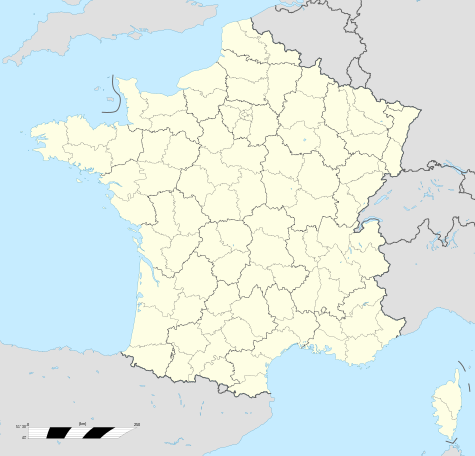
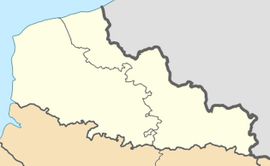
_Nord-France.svg.png)
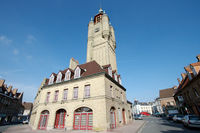
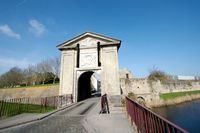
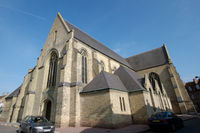
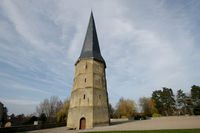
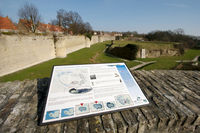
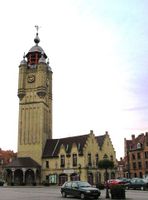
 Erndtebrück, Germany, since 1973
Erndtebrück, Germany, since 1973 This article incorporates text from a publication now in the public domain: Chisholm, Hugh, ed (1911). Encyclopædia Britannica (Eleventh ed.). Cambridge University Press.
This article incorporates text from a publication now in the public domain: Chisholm, Hugh, ed (1911). Encyclopædia Britannica (Eleventh ed.). Cambridge University Press. Media related to Bergues at Wikimedia Commons
Media related to Bergues at Wikimedia Commons